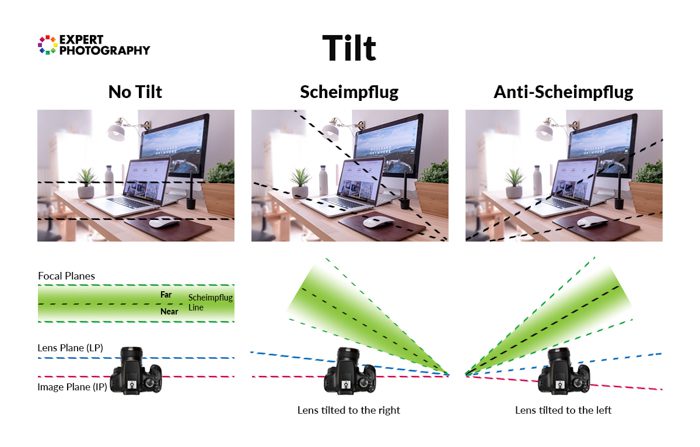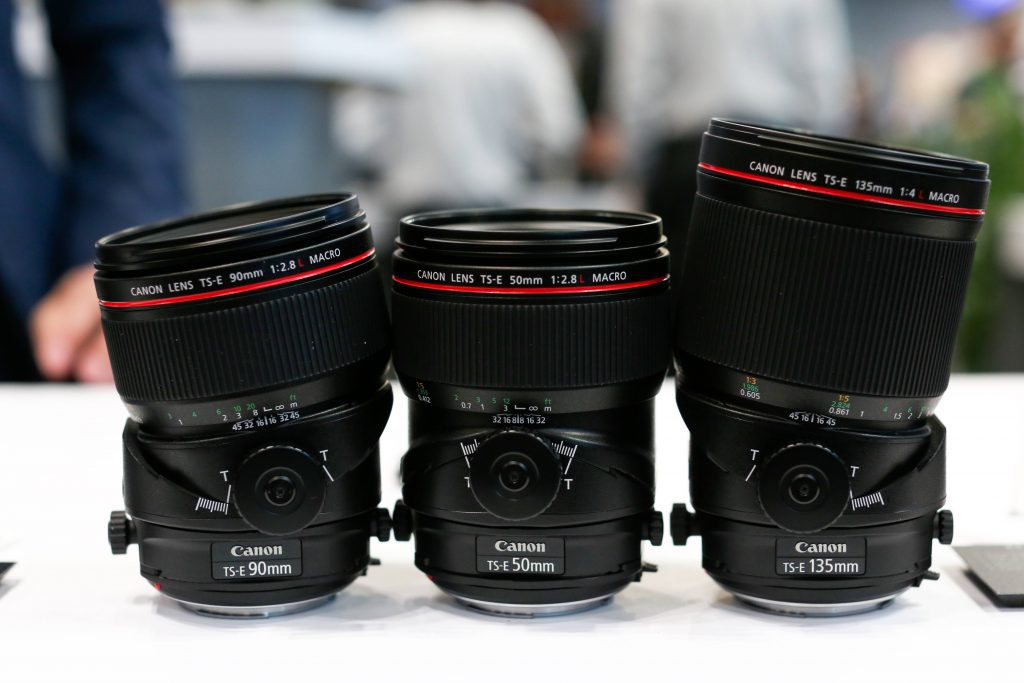Ever wondered how image makers create those mesmerizing miniature-like scenes from real-life landscapes?
That’s the magic of a tilt-shift lens, a tool that transforms the scale and focus of a photo in ways that standard lenses can’t.
We’ll jump into what makes tilt-shift lenses unique and how to wield one to elevate your photography game.
Stay with us as we unlock the secrets to mastering perspective and selective focus.
TILT SHIFT LENS
What Is a Tilt Shift Lens?
Tilt-shift lenses are a type of lens that allows the photographer or filmmaker to control the plane of focus.
They typically have a small range of movement, usually only being able to tilt up or down and shift left and right.
Tilt-shift lenses can be used for creative effect by blurring or moving objects in an image outside the plane of focus, simulating depth of field even when shooting at large apertures.
What Is A Tilt Shift Lens?
A tilt-shift lens is a sophisticated piece of photography and filmmaking equipment.
It allows us to manipulate the plane of focus and the perceived scale of subjects in the frame.
By tilting the lens at an angle to the image sensor, we can adjust the focus plane.
This isn’t limited to parallel adjustments as with regular lenses.
A shift movement enables us to change the position of the subject without moving the camera.
This is critical in architectural photography and filmmaking to avoid the convergence of parallel lines.
It’s an essential tool for maintaining straight lines in buildings and rooms.
The applications of tilt-shift lenses extend beyond technical needs.
We can use them for creative effects, such as:
- Creating a miniature effect where large scenes appear as small-scale models,
- Enhancing selective focus in a scene to guide the viewer’s attention,
- Correcting or enhancing perspective in landscapes and urban environments.
Tilt-shift lenses require practice to master.
Once we learn how to use them effectively, they become invaluable assets in our creative arsenal.
They offer a level of control that’s hard to achieve with standard lenses.
This opens a myriad of creative possibilities in film and digital marketing content.
Understanding The Mechanism
A tilt-shift lens brings to the table an intricate mechanism that enables both the tilt and shift movements.
Tilt alters the plane of focus while shift changes the position of the subject without moving the camera.
Tilting the lens, we’re essentially tilting the plane of focus relative to the image sensor.
This creates a shallow depth of field along the tilted plane, perfect for selective focus.
Shifting, on the other hand, moves the lens up and down or side to side.
It allows for the adjustment of the composition without having to reposition the camera – ideal for those tricky scenes where the camera angle is constrained.
- Tilt adjustments – influence depth of field and selective focus.
- Shift movements – alter perspective and composition.
To harness these controls effectively, we must understand that:
- Tilting is all about mastery of the depth of field.
- Shifting requires knowledge of composition and perspective.
Adjusting a tilt-shift lens is a precision task where tiny movements can have significant effects.
It’s crucial to make gradual adjustments and continuously monitor the results.
In the realm of digital marketing, these tools amplify our storytelling capacity.
They give our content a visual edge that stands out in the bustling digital landscape.
Owning a tilt-shift lens opens doors to expanded creative expression.
Whether it’s in high-end film productions or small-scale digital ads, the ability to manipulate perspective and focus enhances our visual narrative.
Precision and patience are our allies in the learning curve of using tilt-shift lenses.
Each twist and turn is an opportunity to refine our approach to scene composition and focus manipulation.
Advantages Of A Tilt Shift Lens
When we jump into the realm of filmmaking and digital marketing, tilt-shift lenses provide us with an array of benefits that standard lenses can’t match.
They’re indispensable tools for achieving certain visual effects that can make our work stand out.
Precision Control Over Perspective is one significant edge provided by these lenses.
In film, it often becomes necessary to adjust the perspective To maintain a film’s visual continuity or to achieve a specific stylistic effect.
The shift function allows us to correct or manipulate the perspective of a scene without resorting to digital effects in post-production.
Another advantage is the Creative Depth of Field Manipulation.
With a tilt-shift lens, we gain the ability to focus on subjects across a diagonal plane rather than a parallel one.
This selective focus feature gives our footage a distinctive look that resembles a miniature scale or draws the audience’s attention to a specific area of the frame.
Here’s what tilt-shift lenses help us achieve:
- Enhanced control over image composition,
- Unique creative effects not achievable with standard lenses,
- The ability to shoot wide without distortion.
finally, these specialized lenses Help Improved High-Quality Stitching for panoramic shots.
Filmmaking sometimes calls for high-resolution panoramic views, particularly in landscape or cityscape scenes.
Shift movements let us take multiple images with overlapping fields of view, which can be combined seamlessly in post-processing to create ultra-high resolution, distortion-free panoramas.
We must note that while tilt-shift lenses enrich our visual palette, they require a bit more know-how and patience than typical lenses.
Adequate practice and a clear understanding of their functions ensure we harness their full potential in our creative endeavors.
Exploring Tilt-shift Photography Styles
Tilt-shift lenses open up a world of stylistic possibilities for filmmakers.
One common application is the miniature effect – making large scenes appear as if they are small scale models.
By adjusting the plane of focus, we can simulate a shallow depth of field typically associated with macro photography.
This tricks the eye into perceiving large subjects, like cityscapes and crowds, to appear tiny.
Another widespread style tilt-shift lenses Help is the isolated focus technique.
Here, we carefully select a part of the frame to be in sharp focus while the rest falls into a dreamy blur.
It creates a poignant visual narrative, guiding the audience’s attention with precision.
Whether it’s highlighting a single actor in a bustling environment or underscoring a specific action, the effect is captivating.
In genres like architectural filmmaking, tilt-shift lenses are indispensable for their perspective control capabilities.
Skyscrapers and buildings are rendered without the convergence of lines that wide-angle lenses cause.

We’re able to showcase structures in their true dimensions, creating an accurate and flattering depiction of real estate and urban landscapes.
Maintaining the integrity of these lines keeps viewers immersed in the film’s setting.
finally, we tap into tilt-shift for dynamic panoramic sequences.
By stitching together shots with overlapping fields, we achieve wide vistas that are crisp and devoid of the distortion that often plagues panoramic shots taken with regular lenses.
The control over the image composition that tilt-shift lenses provide enables us to craft seamless transitions between shots in a panoramic sequence, ensuring a natural and high-quality visual flow.
How To Use A Tilt Shift Lens
Using a tilt-shift lens effectively requires understanding its two primary movements – tilt and shift.
Let’s jump into the mechanics and applications of these features.
Understanding Tilt
Tilting the lens changes the angle of the plane of focus.
This technique allows filmmakers to control which areas of the frame are in sharp focus.
It’s ideal for scenes that need a selective focus effect, which can draw the viewer’s eye to the subject while blurring the background and foreground.
To achieve this:
- Ensure the camera is on a steady tripod.
- Rotate the tilt knob slowly to adjust the focus plane.
- Monitor the effect through the viewfinder or on the LCD screen.
- Fine-tune the knob until you achieve the desired focus.
Mastering Shift
The shift function involves moving the lens up or down.
It corrects perspective distortion, crucial when filming architecture or products.
By shifting the lens, vertical lines that would otherwise converge in the frame stay parallel, resulting in a more faithful representation of the subject.
Key steps include:
- Keep the camera level to avoid introducing new distortions.
- Use the shift mechanism to adjust the composition vertically or horizontally.
- Check the edges of the frame for any stretching or compression.
Applying both tilt and shift requires skill and practice.
We recommend starting with one movement at a time to familiarize yourself with the lens’s capabilities.
Combining tilt and shift can unleash a powerful set of creative effects.
Indeed, learning to control a tilt-shift lens opens up a new world of storytelling possibilities.
Experimenting with different angles and focal planes leads to a visually striking narrative that can captivate audiences.
Whether we’re crafting an intricate miniature scene reminiscent of The Grand Budapest Hotel or aligning a series of shots for a seamless panoramic sequence, the creative freedom afforded by these lenses is well worth the investment of time and energy.
What Is A Tilt Shift Lens And How To Use One – Wrap Up
We’ve seen the transformative power of tilt-shift lenses and the dynamic visual narratives they can create.
Mastering their use takes our photography and filmmaking to new heights, enabling us to captivate audiences with precision and creativity.
Whether it’s for maintaining visual continuity or crafting unique selective focus, the tilt-shift lens is an indispensable tool in our arsenal.
Let’s embrace the challenge and harness the potential of these remarkable lenses to tell stories that stand out.
With practice, we’ll unlock a world of imagery that truly sets our work apart.
Frequently Asked Questions
What Is A Tilt-shift Lens And Why Is It Beneficial In Filmmaking?
A tilt-shift lens allows for the adjustment of the focus plane and perspective, offering filmmakers greater precision in controlling visual elements.
The benefits include creative depth of field manipulation, perspective control, and distortion-free wide shots.
How Does A Tilt-shift Lens Enhance Digital Marketing?
A tilt-shift lens can create compelling visuals with selective focus and unique effects, capturing the attention of viewers and potentially increasing engagement in digital marketing campaigns.
What Are The Key Creative Effects Achievable With Tilt-shift Lenses?
Tilt-shift lenses enable photographers and filmmakers to manipulate the depth of field in unique ways, such as selective focus and miniaturization effects, as well as correcting perspective distortions for more professional-looking images.
Can You Explain The Movements Possible With A Tilt-shift Lens?
A tilt-shift lens can tilt to change the orientation of the focus plane and shift to adjust the position of the subject within the frame without moving the camera, allowing for precise compositional control.
What Are The Challenges In Using Tilt-shift Lenses?
Mastering tilt and shift movements can be challenging as it requires skill and practice.
Understanding and executing precise adjustments are crucial to achieving the desired creative effects without compromising image quality.
Can Tilt-shift Lenses Be Used For Panoramic Photography?
Yes, tilt-shift lenses are excellent for high-quality panoramic photography as they can be shifted to take multiple overlapping images without distortion, which can then be stitched together seamlessly.




